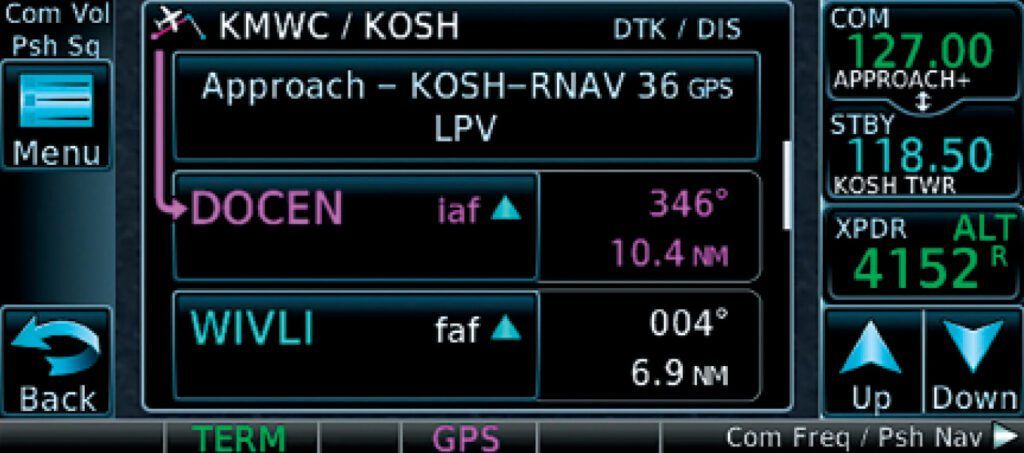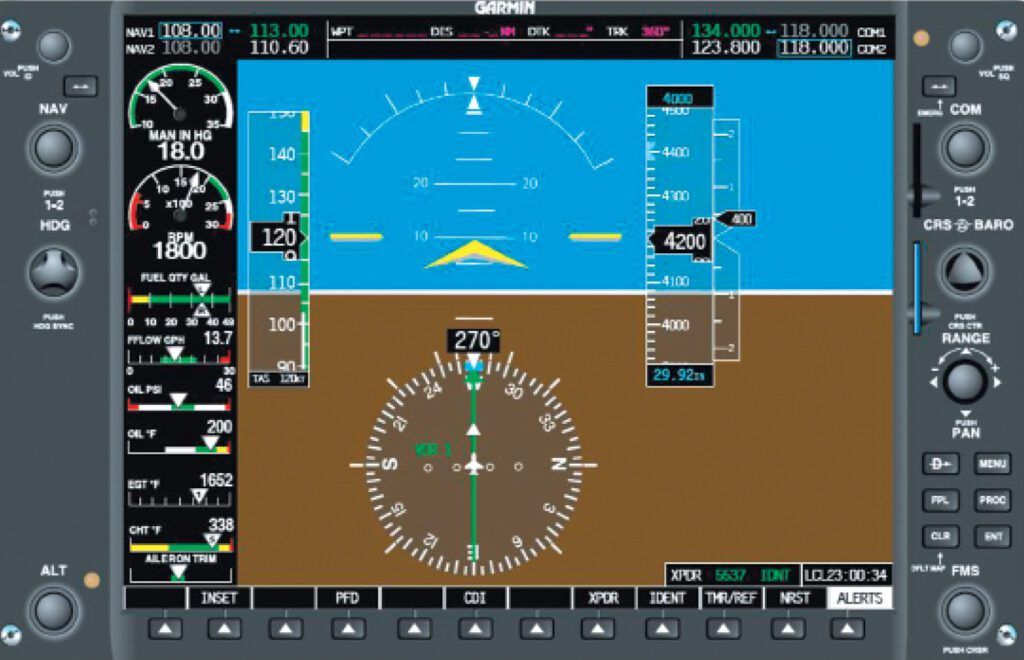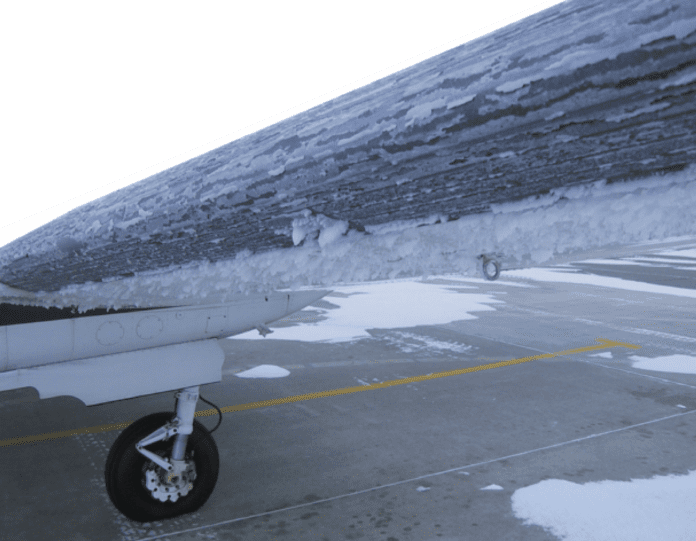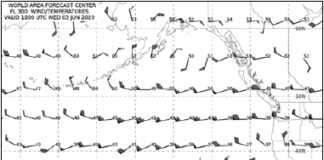The abstracts below derive from ASRS reports on Inflight Weather Encounters involving IFR. They illustrate a variety of real-world IFR weather problems and solutions. If Mother Nature throws you a curve, something you learn here might help someday.
The Icicle Twin
An ATC supervisor in Boston Center asked a controller/pilot to assist with an emergency over New Hampshire. A light twin, IFR at 8000 feet, was picking up ice, below Minimum Instrument Altitudes and could not maintain altitude.
For the next 45 minutes, a team of five controllers and the Center’s meteorologist nudged the aircraft northwest toward lower MIAs and better weather. Other controllers took over the rest of the airspace so the team could focus on assisting the emergency aircraft.
The aircraft was close to and sometimes fell over the aerodynamic edge, entering uncommanded turns and descents. Each time the controller provided simple, easy-to-follow instructions to help the pilot regain and maintain control.
One problem was that the radar could not show obstructions because the Center lacked an Emergency Obstruction Video Map. Getting creative, the controller/pilot spent most of the emergency tracking the aircraft on a Sectional chart and calling obstructions to the radar controller, who relayed them to the pilot. Eventually, the airplane descended below communication and radar coverage, so they enlisted another aircraft to forward radio calls between the pilot and ATC.
Wheeler-Sack military air base in upstate New York also called ATC several times with position updates, as their radar could see the aircraft when ATC’s could not. Ultimately the aircraft landed safely.
The point? ATC will use every resource at its command, even the military, and map reading to help a distressed pilot. Options decrease with time. Need help? Ask!
Pitot Problems
A Lancair Evolution pilot flew to an airport to get it washed. To return, he preflighted and filed an IFR clearance at FL 270. On the ground, it was warm, with temperatures in the mid-eighties and nineties.
He climbed in the clear through FL 180 and turned on the pitot heat per the checklist. He noted the OAT was already -10 degrees C but gave it no more thought.
Approaching FL 240, the Evolution began pitching up, and the airspeed fell to zero. He disconnected the autopilot and started troubleshooting. Since the pitot heat had been on for about two minutes, he assumed it caused the problem.
The copilot informed ATC of their lost airspeed and altitude indications. ATC said Mode C was reporting altitude, which the crew saw, but they believed it incorrect.
He suggested keeping the pitot heat on, which proved wise. Slight life on the ASI was inadequate, so they requested priority handling. ATC vectored them to an IFR procedure for their home airport. About five minutes later, all instruments returned to normal. They canceled priority handling and landed.
Surprisingly, neither pilot seemed to make the connection inflight between the problem and washing the airplane. The pilot felt he exacerbated the issue by turning the pitot heat on after the water froze. He suggested he might begin to fly with pitot heat always on and, more to the point, make reading the OAT a regular part of his scan. May we add: cover the pitot head and static ports before washing.
Buttonology Bites Pilot
A low-time instrument pilot departed IFR in VMC to an unstated airport. He encountered 35-40 knot headwinds on the nose, and ATC vectored him around an active MOA. The winds increased by 10 knots, and the fuel totalizer predicted 8-10 gallons over the destination. The pilot elected to divert for fuel.
When ATC asked which approach he wanted, he answered correctly but wrongly entered an off-by-one-digit airport identifier. He was penalized with an automation surprise: The airplane turned from 220 to 090 degrees toward mountains. In the few minutes it took to realize his error, ATC noticed his deviation and offered a correct heading. They also issued a low altitude alert for the mountain range ahead.
The old flight plan rejected his new approach. He deleted the flight plan, loaded the diversion airport’s approach, and landed after ATC issued a possible pilot deviation.
When he called, they asked laconically, “Hey, what happened here?” He related the details and gave his contact information, but ATC filed no deviation. He returned home without incident.
On reflection, the pilot felt he did his job: aviate, navigate, and communicate. He felt ATC did its job, too. He believed his extensive flight planning and diverting decisions were correct.
He added (paraphrasing), “If I had to do this again, I would have continued toward my initial destination for another five minutes. I would have reprogrammed ForeFlight on my iPad and reviewed the route and approach options. Once I had it right, I would have requested it from Center, then sent it from my tablet to the panel and activated the new route from the panel.” In other words, he got ahead of himself.
Here was a conscientious, technically savvy pilot who made the newbie mistake of rushing to divert and, in his haste, fat-fingered his diversion airport identifier. Don’t rush. Understand what you’re doing before you do it.
Triangle of Agreement
Two CFIIs were descending to an airport in IMC. The pilot flying noticed the attitude indicator showed a climbing left turn, but the altimeter and VSI showed a descent. The heading indicator and magnetic compass showed no turn. Despite proper suction, they concluded the AI was defective, requested vectors out of IMC, and landed at a VMC airport.
In instrument flying, we sometimes refer to a “triangle of agreement” where three instruments must agree that the aircraft’s attitude is correct. They lost that agreement and made a safe decision. Well done!

Over His Head
A Bonanza pilot was flying an approach from the south in IMC with a 300-foot ceiling and rain. He got “a small glimpse of the runway” but noted the opposite runway direction seemed to have a higher ceiling as he flew the miss.
He requested the opposite-direction approach to the runway. Completing the procedure turn, he received alternate missed approach instructions: turn to 090 degrees and climb to 3000 feet. Approaching minimums, his attention was divided by looking for the runway, and he allowed the airplane to drift left. He decided to miss again. He turned to 090 and began climbing when he saw a cellphone tower and made an evasive turn to avoid it. He gave up and flew home.
You can likely discern his error. He realized he had failed to fly to the missed approach point before turning. Obstacle clearance protection begins at the MAP or DA and, as in this case, might not exist earlier in the approach.
A contributing factor, he added, was his belief that the clouds were higher to the north. The second approach’s minimums had been raised to 1555 feet, which didn’t help. The pilot insisted he was mentally prepared to fly the miss but did not expect alternate miss instructions. He added that perhaps this was a “little too much workload as a single pilot in IMC, which caused me to forget to proceed all the way to the MAP before turning.” That makes two lessons learned.
Near Miss
The 800-hour pilot intended to fly to an appointment. The weather during the approach was IMC, with intermittent light to moderate rain and heavy traffic in the vicinity. After handoff to Approach, he received instructions to “maintain best forward speed” and was cleared for the approach.
Though unfamiliar with this instruction, he didn’t ask the controller for clarification due to heavy radio traffic and his workload. He mistook it to mean he needed to maintain his current speed during his approach to maintain separation from faster traffic behind. When the autopilot failed to capture the glideslope, he began to fall behind the airplane, hand-flying as he set his landing configuration.
Suddenly he had a new airplane. His excess speed forced more frequent course corrections, becoming harder the closer he got. Approaching minimums, he was slightly below the glideslope and right of course. Recognizing the airport but lacking sufficient forward visibility to identify the runway environment, he began his missed approach even as the tower instructed him to go around. He diverted and landed without incident.
He was unaware he might have created an unsafe situation until an FAA aviation safety inspector called. ATC had forwarded the incident for investigation because it appeared that at the end of his approach, before initiating the missed approach, his aircraft overflew the adjacent taxiway where two airliners were holding.
If you were the unfortunate pilot, what would you say? The airplane got away from me? ATC started flying my airplane? I didn’t understand what “best forward speed” means? Did I fail to assert my PIC authority?
Had the pilot taken a breath, he would have realized that “best forward speed” is deliberately ambiguous. Only the pilot knows that speed. He felt pressed by fast traffic behind him, but separation wasn’t his problem; that’s ATC’s province. We know mixed-service airports can bring airliner and GA speeds into conflict.
In the pilot’s defense, “best forward speed” is not in the AIM or Pilot Glossary. The Controller’s Handbook mentions “maintain maximum forward speed,” primarily intended to sequence a group of aircraft. The opposite is “maintain slowest practical forward speed.” (Just so you know.)

Eyesight Makes Right
During an IFR flight, the pilot encountered unforecast clouds and thunderstorms. The thunderstorm did not appear on his XM multifunction display.
The pilot attempted to top the weather, but the clouds were building too rapidly. He tried down low, which didn’t work, either.
Asking ATC what lay ahead, she saw light rain at 11 o’clock but clear between him and his destination. He disagreed. “It looks like a wall of water ahead. Could I get vectors to stay clear?”
ATC reiterated he could fly direct to his destination and remain clear of rain. Trusting ATC over his vision, he turned. Sure enough, entering cloud, he encountered severe turbulence. The pilot reduced power, disconnected the autopilot, and tried to hold altitude, airspeed, and attitude. He was in a thunderstorm ATC said didn’t exist.
The up-and-downdrafts caused erratic airspeed and altitude variations. Severe radio static from lightning made communication difficult. ATC sent garbled and static-filled transmissions to climb. He acknowledged and attempted to comply but was very busy maintaining control.
Still in the storm’s grip, Center handed him off to Approach. The static made him unsure he had received all their instructions. Upon exit, he flew an approach and landed safely.
The pilot blamed the well-known multi-minute weather delay in the Center for not seeing this fast-building storm, also valid for his MFD. Nor does Center radar pick up all the weather.
When the pilot requested vectors to stay clear, he wasn’t listening. ATC couldn’t steer him around severe weather they couldn’t see. He gets kudos for aviating first and communicating last. He receives a demerit for disbelieving what was plainly before him and another for trying to maintain altitude. In a storm, try to keep the airplane upright, avoid turns and muddle on through.
Sudden IFR
An air-tour pilot encountered IMC in Hawaii, where the weather can change quickly. He credited assistance from ATC and his instrument skills for averting an accident. An IFR-rated Lake Amphibian pilot ran into sudden IMC. Flying low over saltwater, he misjudged his altitude and smacked the water, but without damage. A VFR pilot encountered IMC and flew past his airport due to fog and haze. ATC provided headings, and he landed safely.
An instructor and student departed the Oshkosh airshow westbound per the OSH VFR departure procedure. Circling the airport clockwise to the north to fly east, they encountered IMC. The instructor later wished he had called OSH tower and coordinated an eastbound turn. Instead, they wound up scud-running and barely missed a tower. The CFI believed he should have used his PIC authority rather than slavishly following the departure procedure into IMC.
The Common Thread
These reports were all unexpected. If you can avoid overloading yourself while airborne you’ll have a little extra capacity should Murphy become your copilot.






These are very helpful. Thank you.
This question is regarding the article Weather Encounters, and ATC using the sectional chart to advise a pilot about obstructions when he could not maintain safe altitude. When will ATC get obstruction and terrain layers on their displays? This emergency scenario is reasonably foreseeable, and using a printed sectional, while commendable, does not approach state of the art in air safety.